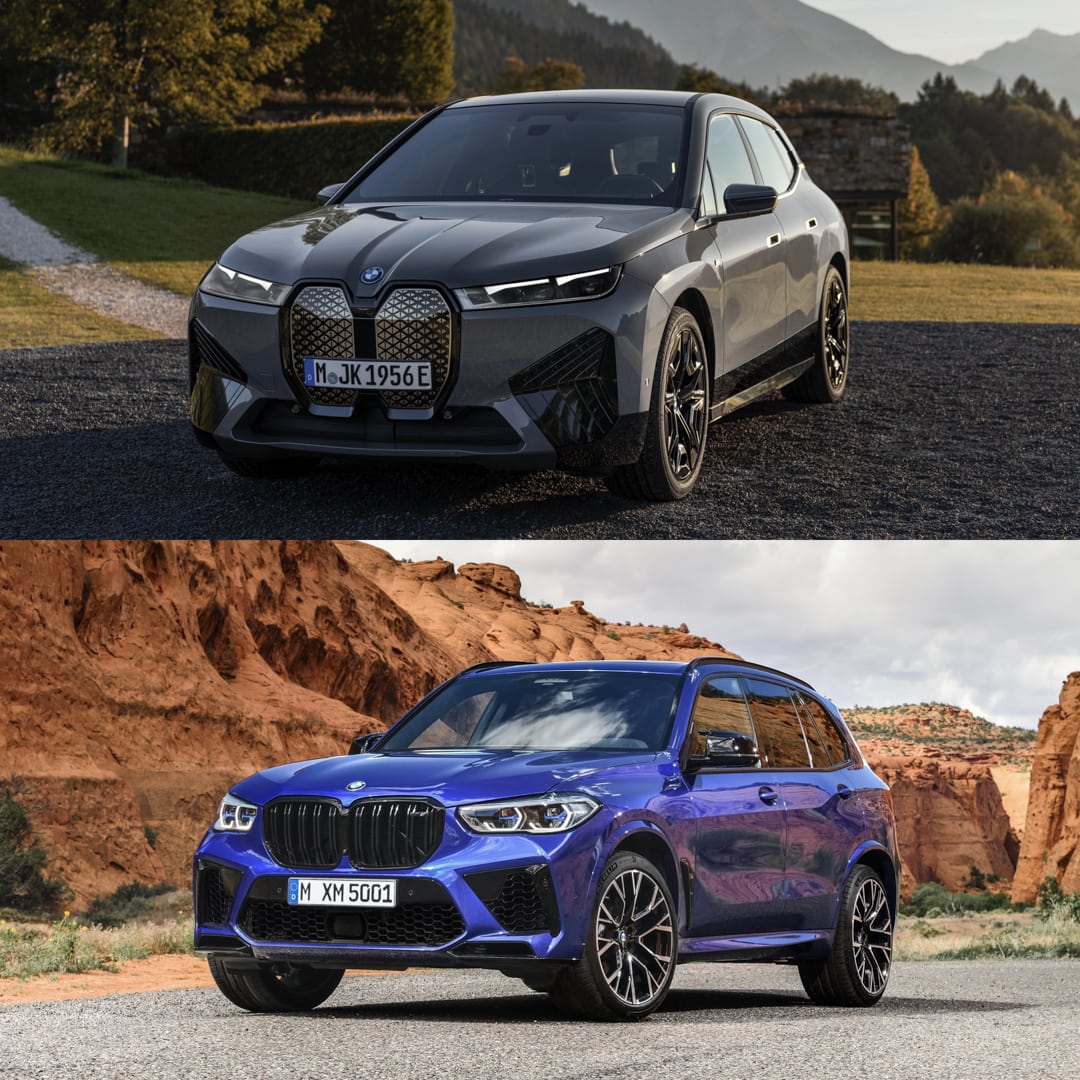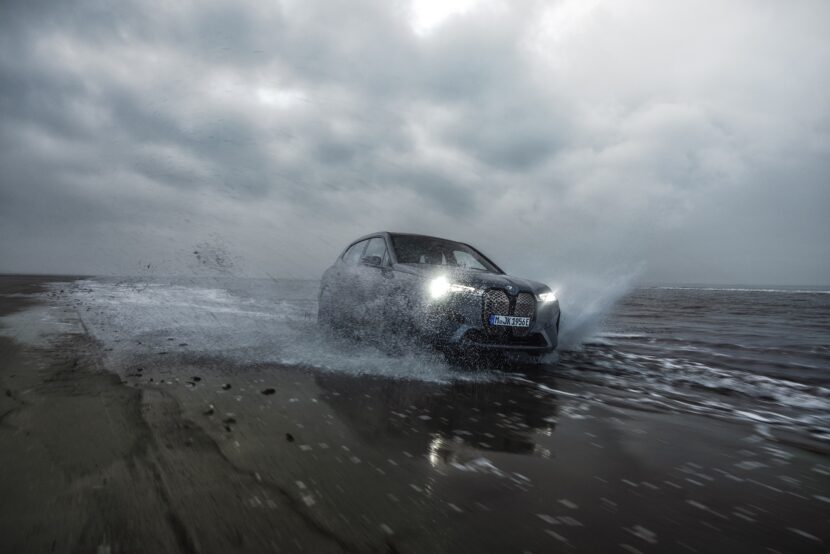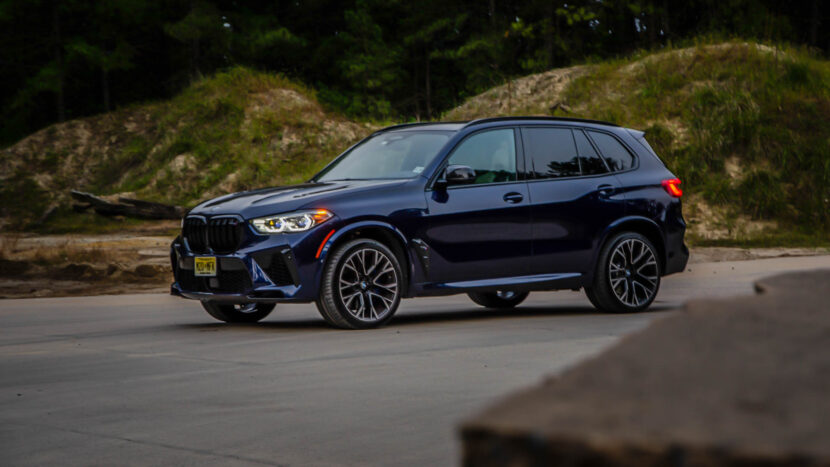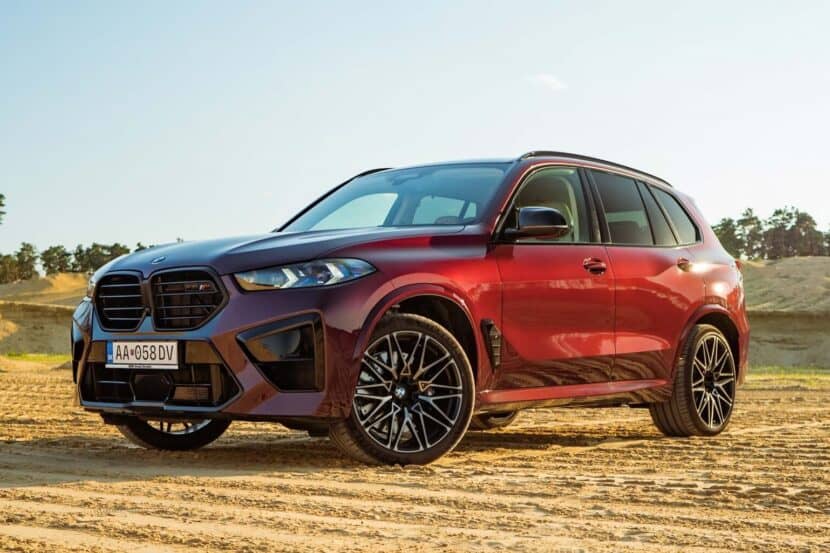The BMW iX M60 is finally here and it’s made me very excited about a future comparison test between it and the BMW X5 M Competition. It’s a comparison we need to do, ya know, for science. Once the iX M60 is finally on sale, both it and the X5 M Competition will occupy a very similar space, in terms of price, power, and performance. And yet, they’ll have so many differences that they will truly offer two completely different flavors of the same food.
It’s going to take some time to set such a comparison up, though. The iX M60 won’t be available to test for quite some time, so we’ll have to wait patiently before we can get the two on the same bit of tarmac. In the meantime, we can list their specs, discuss their strengths and weaknesses, and compare their values, to see which can might be best for you. So if you’re looking to drop six figures on a performance SUV, grab a cup of coffee and let’s dig in.
Price
Let’s get right down to the brass tax. That the BMW iX M60 and BMW X5 M Competition are priced so similarly is the main reason we’re having this discussion. If you show up to a BMW dealer with around $100,000 burning a hole in your pocket and you want an SUV (which, if you’re in America, you do), both the iX M60 and X5 M Competition are available for purchase. A smart customer would do their due diligence on any car in their price range, especially when they’re spending that much cash. So as different as the two cars are, a smart customer will check both out.
Probably unironically, the BMW iX M60 starts at the same $105,000 as the BMW X5 M. Admittedly, the Competition Package adds almost another $10,000 to the X5 M but the majority of customers will likely choose it, which is why it’s the one we’re using for this comparison. Still, the two cars are close enough in price to be cross shopped.
What do you get for your money? Both cars are similar in size, they seat the same number of people (five adults in a pinch), have similar trunks, and both have similar levels of build quality. However, the BMW iX M60 comes with better technology; iDrive8 versus the X5 M’s iDrive7, an electrochromic sunroof, and the latest digital gauge cluster BMW offers; as well as a bit more interior space, due to its bespoke EV architecture.
Performance
Both the BMW iX M60 and X5 M Competition have over 600 horsepower. The iX M60 uses two electric motors to make 610 horsepower and enough torque (811 lb-ft) to tug the moon out of orbit. While the BMW X5 M Competition uses its 4.4 liter twin-turbo V8 to make 617 horsepower and 553 lb-ft of torque. Though, if you opt for the standard X5 M, you only get 600 horsepower but the same amount of torque.
According to BMW, the iX M60 can get from 0-60 mph in 3.6 seconds, which is two tenths faster than the claimed time of 3.8 seconds for the X5 M Competition. Will both cars be faster than their claimed times in reality? Most likely, as that’s been the case with almost all modern performance BMWs. How much faster is unknown, so we’ll have to stick with the claimed times. In doing so, the electric one is the faster one, despite being cheaper. Top speed for the iX M60 is 155 mph, as it is for the standard X5 M, but the X5 M Competition gets a bump to 174 mph.
Range/Efficiency
There are naturally going to be some concerns surrounding the range of the BMW iX M60, especially among customers new to EVs. With only 280 miles of range, the iX M60 falls a bit short of its xDrive50 sibling and many of its Tesla competitors. However, it’s actually not much less of a total range than the BMW X5 M. The latter of which only gets around 13 mpg city and 18 mpg highway, which nets it an average range — based on its 21.9 gallon fuel tank — if around 340 miles but that’s only if half of the fuel tank’s mileage is on the highway. During most normal driving, you’re looking at a realistic range of 300 miles on one tank, for the X5 M.
Of course, the BMW X5 M Competition can refill its tank in just a few minutes, while using a nearly infinite network of gas stations. While the BMW iX M60 will take 35 minutes just to recharge most of its battery (10-80 percent) and over an hour to recharge from flat to full, using a 200 kW DC fast-charger. Not only are 200 kW fast chargers hard to come by in most parts of the world but finding one can add significant time to any long trip. If you charge at home, with a Level 2 11 kW wall charger, it will take eleven hours to charge in full.
The latter of which isn’t a problem if you plug it in when you get home from work and don’t go anywhere until morning. Doing that will give you a “full tank” every single morning. However, its lowish range does put you on a 140 mile leash, leaving you with 140 miles to get home, if you don’t have a DC fast charger on your route.
There’s no doubt the BMW X5 M Competition is more convenient to refuel, as it takes a five minute pit stop at any fuel station to get back on the road. But electric cars aren’t as much of a burden as many detractors claim. Unless you regularly drive more than 100 miles per day without any fast-chargers in that route, the BMW iX M60 will serve you just fine.
Value
The BMW iX M60 is a very interesting value proposition. It’s admittedly difficult to call any car that costs six-figures a “value” but when you compare it to its contemporaries, it’s actually a good deal. For the same price as the X5 M (and cheaper than the X5 M Competition), the BMW iX M60 is built on a bespoke EV architecture with semi-carbon fiber construction, has essentially the same amount of horsepower but far more torque, is faster in a straight line, seats the same amount of people, has newer cabin technology, and is all-electric.
The BMW X5 M Competition is a very fast SUV, built on a shared platform, with similar interior space and practicality, easy to refuel, and a bit easier to live with. However, those are really its only advantages. There will be some enthusiasts that claim the X5’s looks are an advantage but we’ll leave that for a different discussion, as looks are subjective. Instead, we’re looking at the facts and the fact of the matter is that the X5 M offers very few advantages over the iX M60. Its main advantage is that it’s easier, quicker, and more convenient to refuel but if you do your charging at home, it’s actually a moot point.
Subjectivity will always play a huge role in how a customer chooses their car. Cars are emotional purchases after all. If they weren’t, we’d all be driving Camrys. The X5 M’s more traditional looks and more conventional fueling will likely be more comforting to most customers in that price range. However, looking at both cars objectively, it seems that the BMW iX M60 is actually the better car to buy for most people.











































































